Asus ROG X670E Gene review: Small motherboard, big power
This microATX RGB mobo is a gaming enthusiast’s dream.
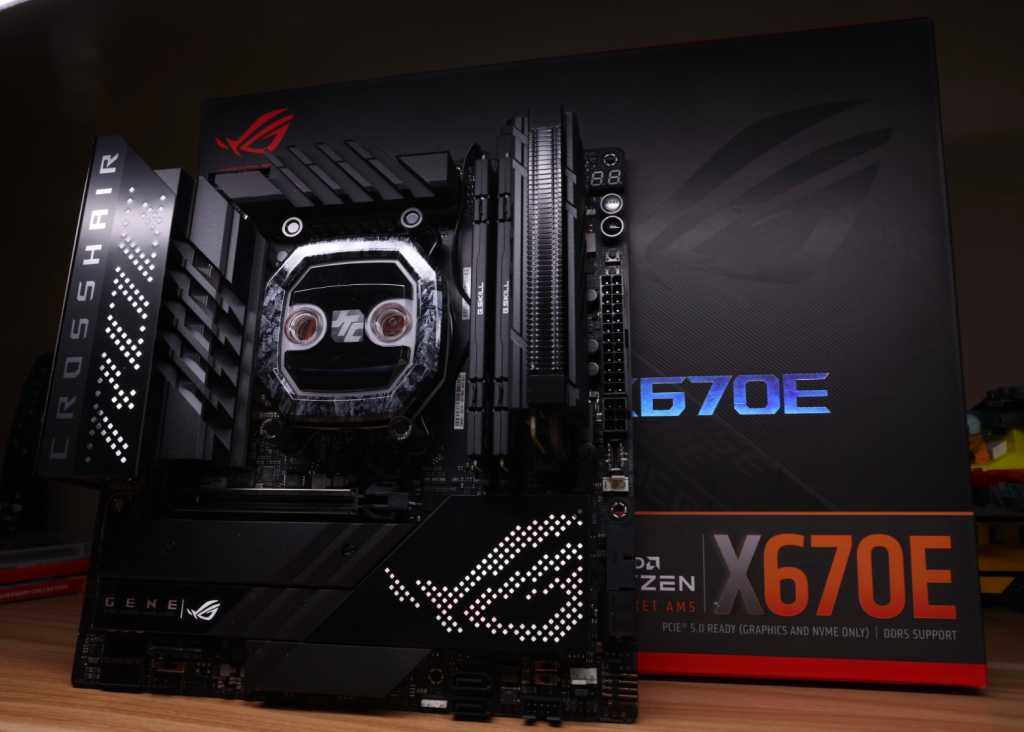
Expert’s Rating
Pros
- Stunning design and high build quality
- Included ROG Gen-Z.2 NVMe card
- Next gen features, DDR5, PCIE Gen 5
- M-ATX will fit in smaller PC cases
Cons
- Only 2 DIMM slots and some may find 64GB RAM limiting
- mATX limits such as one 16x slot, and one onboard NVMe.
- $599 MSRP is bit high considering the specific use-case appeal
Our Verdict
The Asus ROG X670E looks like a dream and it’s packed with great gaming-specific features. That being said, it’s pricey and its gamer-centric focus means that those seeking a motherboard for something other than gaming, such as content creators, may want to look elsewhere.
AMD has some fast AM5 Ryzen 7000 CPUs that go all the way up to the mighty Ryzen 9 7950X. Such powerhouse chips often require powerhouse solutions, leading to massive builds to accommodate the processor and all the accouterments that go along with it.
The Asus ROG X670E Gene flips that notion on its head. Sporting the microATX form factor, this board hits a nice sweet spot for builders who don’t want to go massive. Smaller than ATX, mATX opens up a world of less girthy cases; but larger than ITX means you’ll have more features to enjoy. DDR5, PCIe Gen 5, all the latest goodies are here. It does have a few compromises compared to an ATX motherboard that’ll we’ll discuss.
From the specs, to the features, to performance attributes, and design, let’s see whether this smaller-sized Gene can deliver a high-end enthusiast wallop.
Asus ROG X670E Gene: The specs
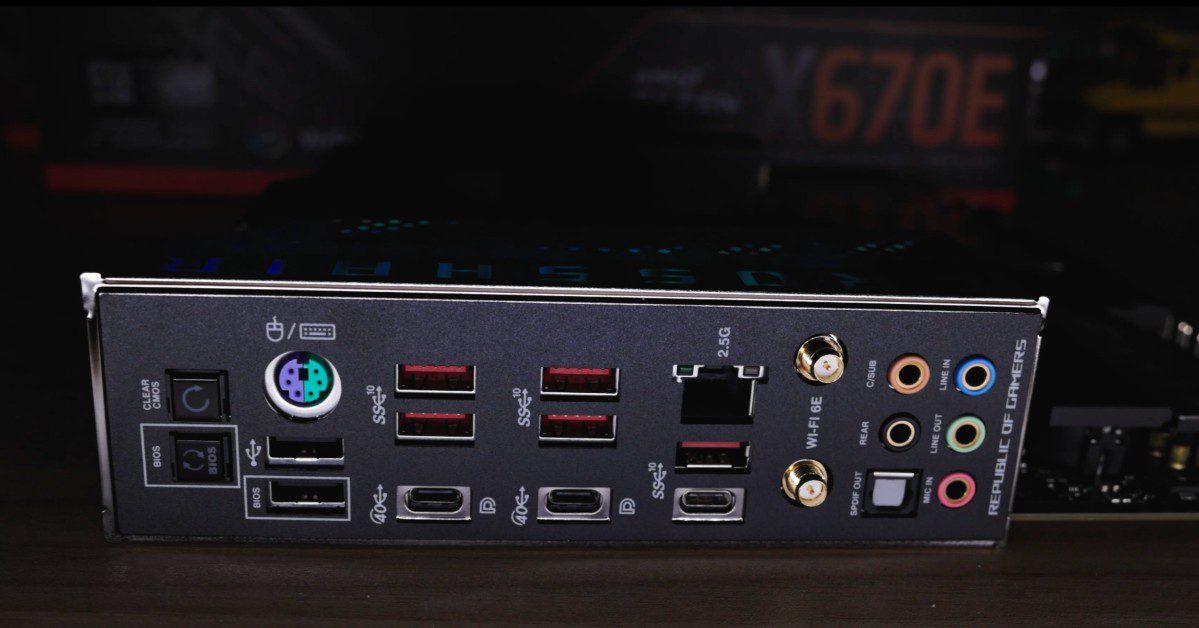
The USB4 ports on the Asus ROG X670E are capable of a blazing-fast 40Gb/s transfer speed.
The Asus ROG X670E Gene ask an MSRP of $599, which lands it squarely in the high-end motherboard category. It’s microATX to boot—making it almost a mini-ROG “Extreme.” (9.6 inch x 9.6 inch, or 24.4 cm x 24.4 cm)
In addition to supporting any Ryzen 7000 CPU, the Gene has quite the spec list.
The X670E already carries with it more USB port options, SATA ports, and PCIe Gen 5 Lanes. You’ll also get USB4 and USB C, with monitor display-out.
As feature packed as the Gene is, you’ll have a few compromises, such as 4x SATA ports, only one onboard NVMe slot, etc. These are typically more abundant on ATX motherboards.
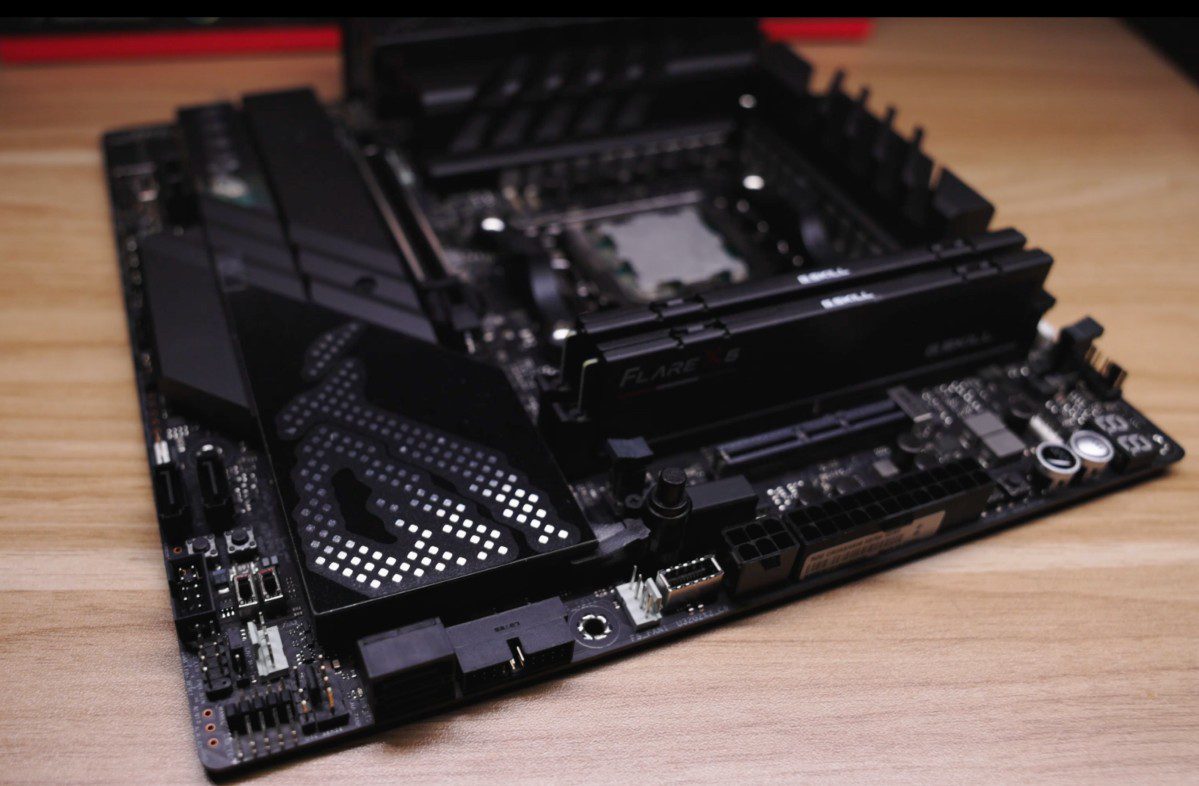
The unboxing experience is enjoyable and par the course with a $599 motherboard. After taking out the hefty, superbly built Gene, you’ll find some nice accessories in the box, including a ROG Gen-Z.2 card that lets you add two more NVMe drives—and makes for RAM-like ease of access. You’ll also get the “ROG True Voltician” tool for overclockers.
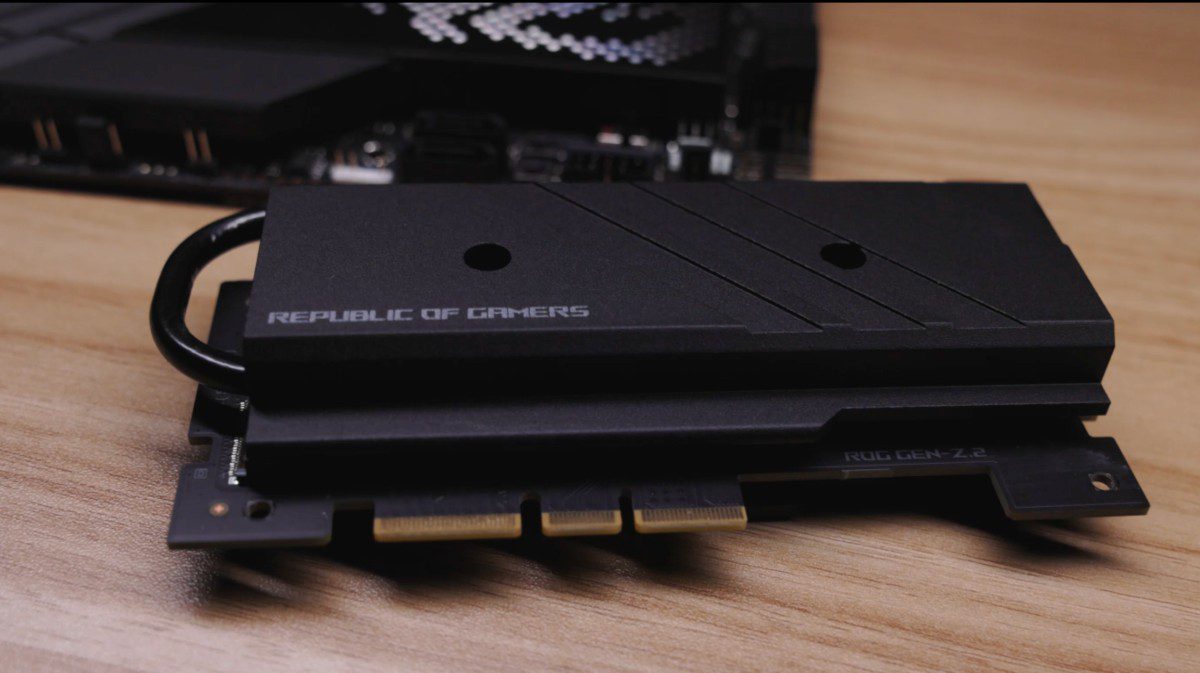
- Micro-ATX form factor
- Support for AMD AM5 Ryzen 7000 CPUs
- 16+2 Phase Design with 110A per stage
- DDR5 RAM, dual channel up to 2 DIMMs (up to 64GB)
- 1x onboard M.2 slot (PCIe Gen 5)
- 2x M.2 slots on ROG Gen-Z.2 card (1x PCIe Gen 5)
- 1x PCIE 16x slot (PCIe Gen 5)
- Dual USB-C monitor display-out
- 10 USB ports on back (including USB4 40Gb/s)
- PS2 port
- Intel 2.5GbE LAN
- Wi-Fi 6E
- RGB headers for Aura Sync
- 4 SATA 6GB/s ports
- 7 PWM fan headers
- BIOS Flashback and Clear CMOS
- Preinstalled I/O shield
- ROG SupremeFX 7.1 ALC 4080 audio
- MSRP $599
Asus ROG X670E Gene: Features
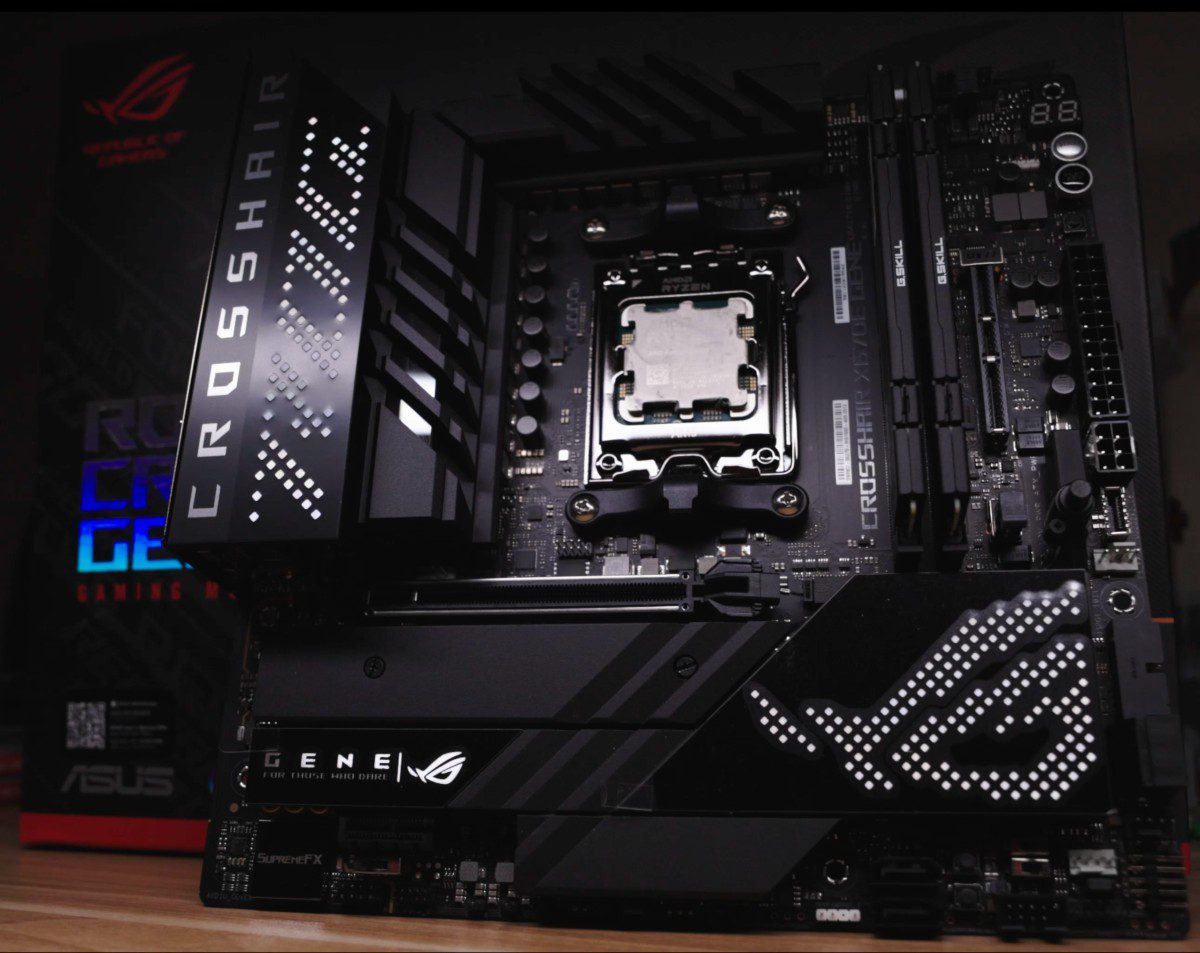
With it’s $599 MSRP, you’d expect class-leading features, right? And, yes, you’ll get them! Just remember the one caveat: Since the Gene is microATX, it will also likely have less of them than a full-sized ATX.
First, it offers the fast DDR5, but you’ll be limited to two DIMM sticks, with a maximum of 64GB. Most ATX motherboards can support twice the sticks and capacity. This shouldn’t bother most users, but pure workstation jockeys may want to choose something else.
Second, the Gene only offers a single onboard NVMe slot—while many larger boards typically have at least two or three. Again, no big deal, as the included ROG Gen-Z.2 add-in card allows you to add another slots, for a total of three. We also like that both the onboard slot and one of card’s slots are PCIe Gen 5.
You’ll get a single 16x PCIe Gen 5 slot, enough for your GPU, and a smaller PCIe 4x slot for some smaller add-in cards. The GPU release button is a nice “quality-of-life” feature—a great way to grab your GPU safely out of that slot!
Ryzen 7000 CPUs will give you a built-in iGPU, which can be accessed by the USB-C display-out on the Gene. Neat, and those same USB-C ports are USB4, at a fast 40Gb/s. The USB port selection is solid, with a total of 10. You’ll also get a PS2 port, for the legacy-peripherals fans.
Wi-Fi 6E is also here, as is 2.5Gb LAN. We don’t expect 10Gb LAN on this type of motherboard, since it’s more “gamer” focused—but it’s a nice-to-have.
Audio is great here, with the ROG SupremeFX 7.1 4080 codec and inputs/outputs on the back with optical S/PDIF.
Since this is an enthusiast-gamer offering, you’ll get Clear CMOS, BIOS Flashback, plus an LED Debug code readout. It’d be nice to have a few more chassis fan PWM headers, but the offering here is sufficient for most smaller builds.
Overall, the Asus ROG X670E Gene has all of the next generation features you’d want to pair with Ryzen 7000, with some compromises. If you’re okay with the 64GB RAM limit, fewer PCIe slots, and less total NVMe options, the rest of it truly delights.
Asus ROG X670E Gene: Design
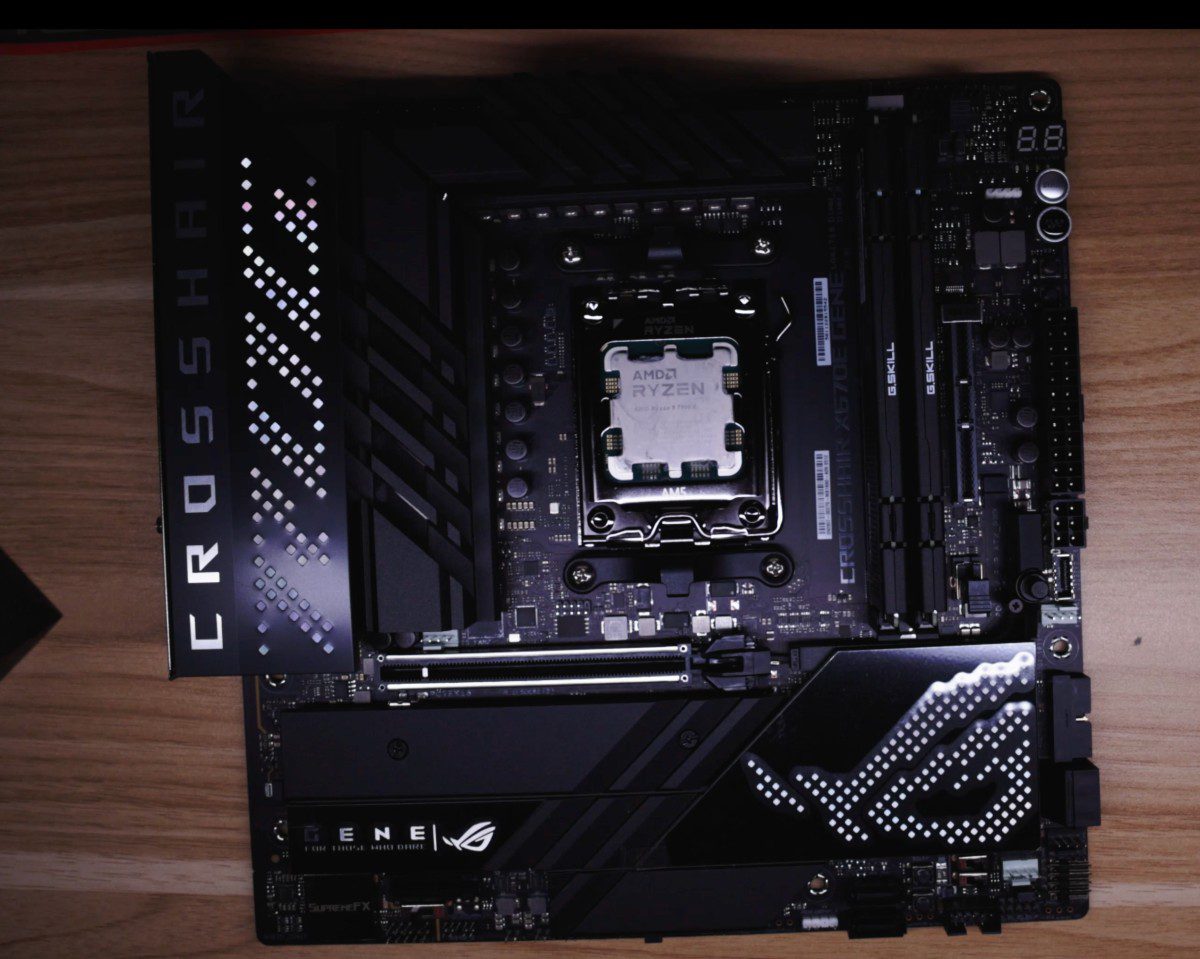
The microATX design of the Asus ROG X670E is absolutely superb.
Design is where the Asus ROG X670E Gene truly excels: It’s an absolutely gorgeous motherboard packed into the microATX form factor. The RGB is strong with this one—with the I/O shield area and lower portion of the board sporting Asus ROG effects aplenty.
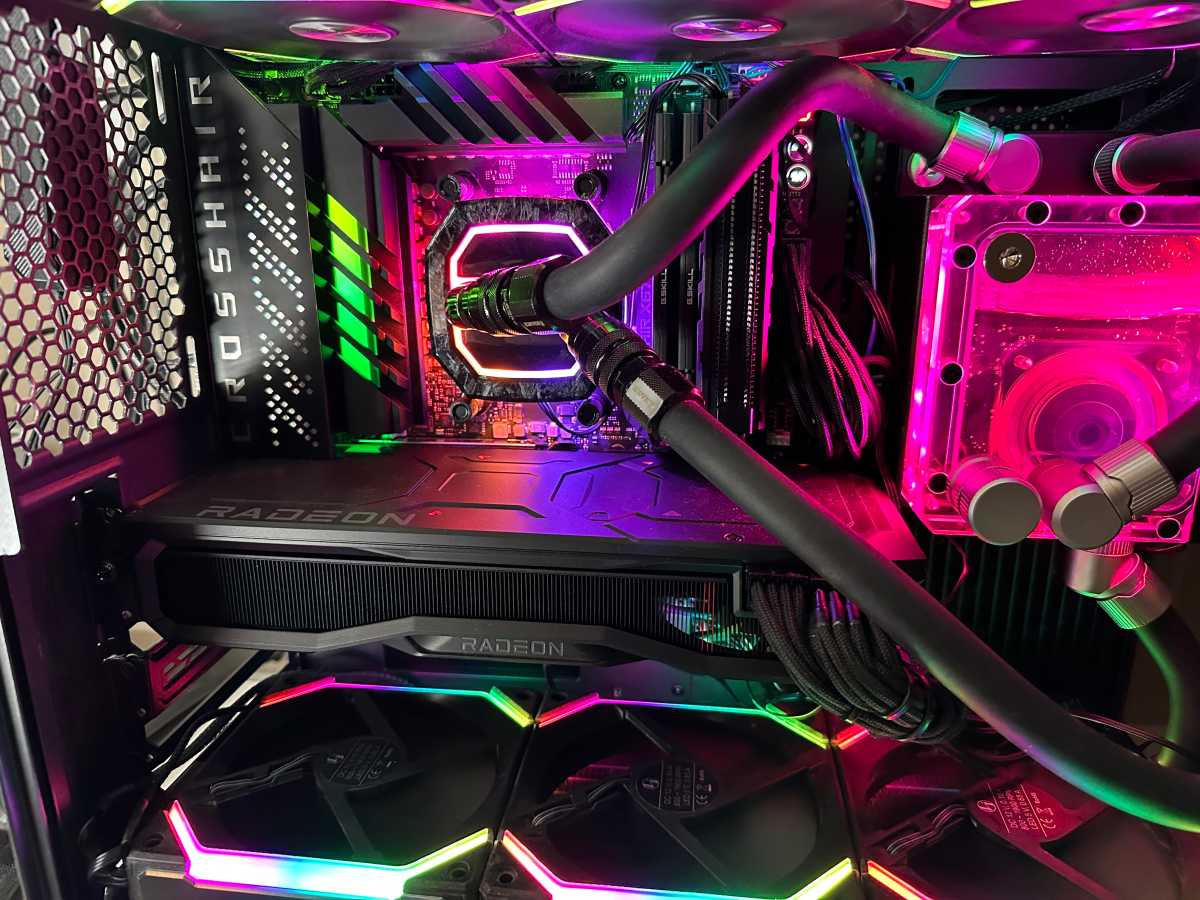
Glorious RGB on the Asus ROG X670E.
The moment you physically pick up the Gene, you’ll be impressed by its heft, and how solidly built it feels. Every inch is tastefully finished, with functional cooling armor plating on the lower areas providing pizzazz and cooler temperatures.
The ROG Gen-Z.2 add-in card is smartly designed, too. It goes right next to the RAM slots and clicks-in in a similar fashion. Since this microATX motherboard only offers a single NVMe slot onboard to conserve space, this is a smart inclusion. It looks sweet, with plenty of heatsinks of its own!
The I/O shield and VRM heatsink area also look purposeful and stunning. Even when off, the lettering has immediate appeal—which is accentuated when it’s turned on. The I/O shield is integrated as well, with clearly labeled ports throughout.
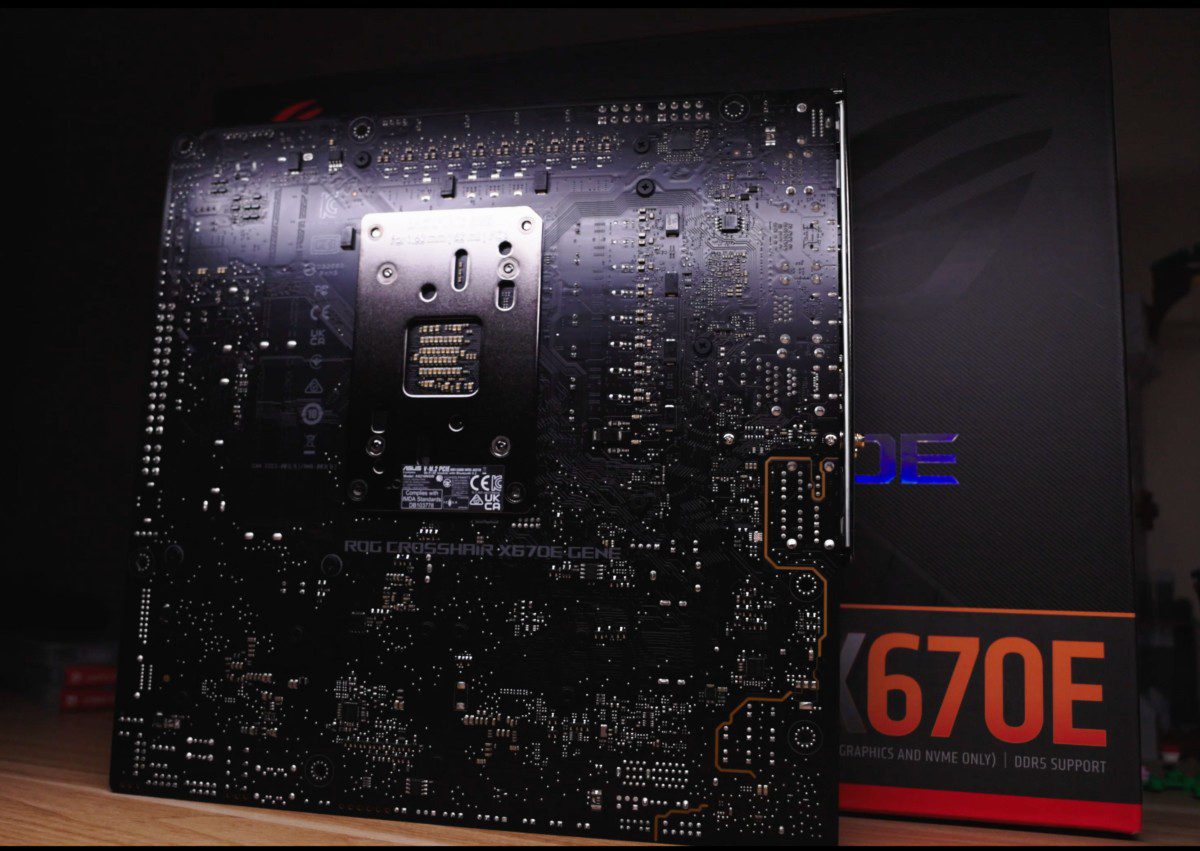
The rear has no backplate, but with this microATX motherboard going into tighter spaces, that may be a good thing. (Some beefy motherboards such as the E-ATX Z690 Asus ROG Glacial Extreme can be a tight fit in even some large cases due to certain clearances.)
Overall, it’s a beautiful design that screams enthusiast gaming—and has lots of functionality built into the design. Bravo!
Asus ROG X670E Gene: Performance, software, and BIOS
The Asus ROG X670E Gene is a performance monster! With 16+2 power stages, the Ryzen 9 7950X will be a piece of cake. VRMs and heatsinks abound, with more than sufficient cooling to go around.
If you noticed the water block on the CPU above, that’s because Ryzen 7000 needs as much CPU cooling as possible and is a great match for an custom water-cooled loop. You’ll have the motherboard VRMs as backup for overclocking and not break a sweat!
Performance continues throughout this motherboard: PCIe Gen 5 is here in the 16x PCIe slot, plus the onboard NVMe slot, as well as in one of the ROG Gen-Z.2 card’s slots (the other being Gen 4). You’re limited to a single 16x PCIe slot and a smaller X4 slot, however.
DDR5 is fantastic memory support, with blisteringly-fast speeds. Keep in mind the 64GB limit, however. This can often be a positive for RAM overclocking, as many enthusiast-grade boards of the past have had limited RAM slots as technically it’s less connections to make—making them potentially faster.
Elsewhere on the motherboard, even the USB ports are hyperspeed—with included USB4 at 40Gb/s.
If you do wish to venture further and push overclocks, the Asus BIOS is one of the best on the market. Ryzen 7000 CPUs also respond great to “Eco mode”-style tweaks to limit power and heat, too. (Check out our Ryzen 7000 Eco Mode tips here)
The included Asus Voltician tool lets you monitor voltage when doing your overclocking rounds, a nice inclusion for those who can appreciate it.
Automatic overclocking and DDR5 Expo profiles for RAM are also here for those who wish to avoid any tinkering. The Asus ROG X670E Gene is loaded with overclocking performance-oriented features, such as Clear CMOS, Debug LEDs, etc.
For AM5 X670E motherboards—a brand new chipset—Asus makes BIOS updates easy, which is good since you’re better off doing them more frequently in early adopter platforms. Take note of that if initial boot times on X670E are slightly longer than normal—that should change over time.
Motherboard software is all the rage these days, at least from the manufacturers’ perspective. Asus Armoury crate is included and can often install itself automatically in order to provide drivers. It can also do a variety of tasks—such as Aura Sync RGB control, fan control, and easy driver updates. It’s an attractively designed piece of software that is leagues better than motherboard software offerings of the past.
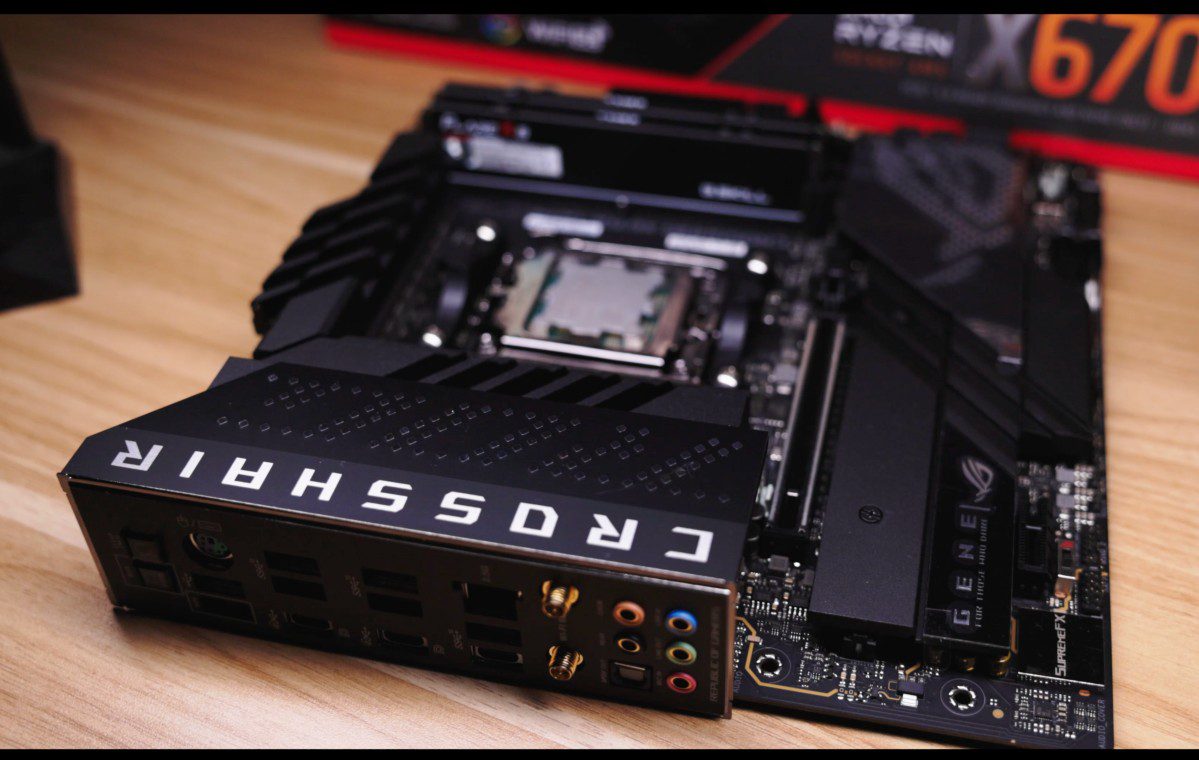
Should you buy the Asus ROG X670E Gene?
With a $599 MSRP the Gene is targeted at the enthusiast gamer who wants the best—but in a smaller microATX form factor. Build quality and aesthetics are stunningly done.
There are some compromises with this being microATX and gamer focused, however. Content creators may want to look at other options. You’re limited to 64GB of RAM and two DIMMs, a single 16x PCIe slot, and one onboard NVMe slot (with two additional on the ROG Gen-Z.2 card).
If you can look past those limitations, the rest of the board screams with features and performance. DDR5, PCIe Gen 5, robust VRM cooling, and a plethora of rear I/O. And USB4 at 40Gb/s is some of the fastest USB speeds we’ve ever seen on a motherboard!
